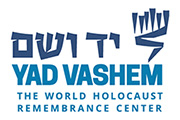After the Darkness?
Holocaust Survivors’ Emotional, Psychological, and Social Journeys in the Early Postwar Period
Editors: Constance Pâris de Bollardière and Sharon Kangisser Cohen
His reaction to my cautious questions about his parents, his brothers and sisters, his experiences in the concentration camp was characteristic. His only response was to let his head drop onto his chest. He remained sitting in this posture in silence for some time. It must be said here without pathos or literary embellishment that it is only now that he has been returned to normal life that this child feels the pain and torment of everything he has seen and experienced.
Hans Keilson
Emerging from the horror and ruins of the Holocaust, survivors were confronted with many challenges, both physical and psychological. The loss of their loved ones, the destruction of their world, and prolonged exposure to violence and suffering would leave an indelible mark. This volume examines how individuals—physicians, psychiatrists, psychologists, psychoanalysts, educators, social workers, or activists and organizations understood, evaluated, and responded to the war’s emotional impact on Holocaust survivors. What kinds of programs or support networks did they develop and offer? How did the survivors themselves face their emotional and psychological wounds and needs?
After the Darkness? Holocaust Survivors’ Emotional, Psychological, and Social Journeys in the Early Postwar Period brings together international scholars from different disciplines to address these questions. Their important work in this burgeoning field documents and traces several case studies on the theories, observations, and practices of organizations and individuals who strove tirelessly to provide a way forward for survivors in the aftermath of the war.
